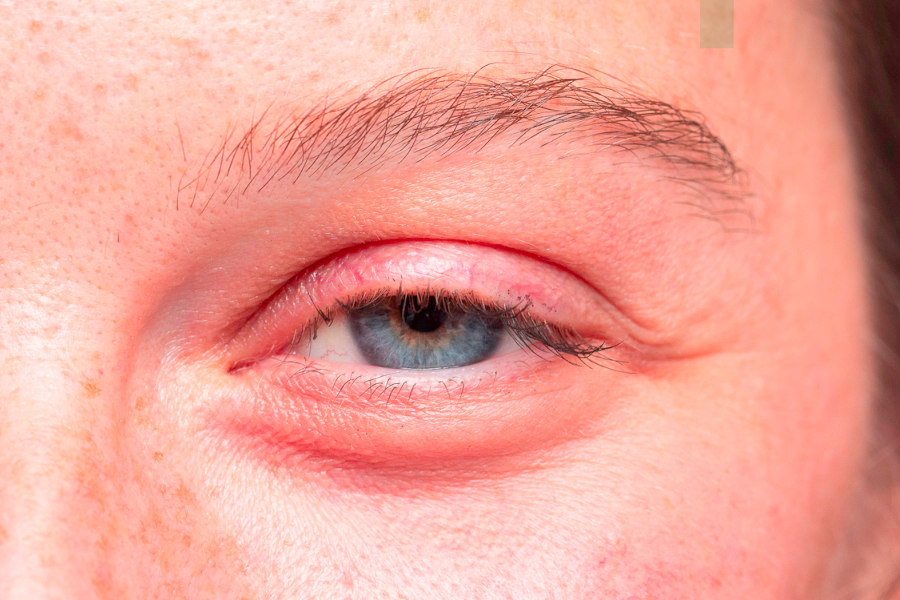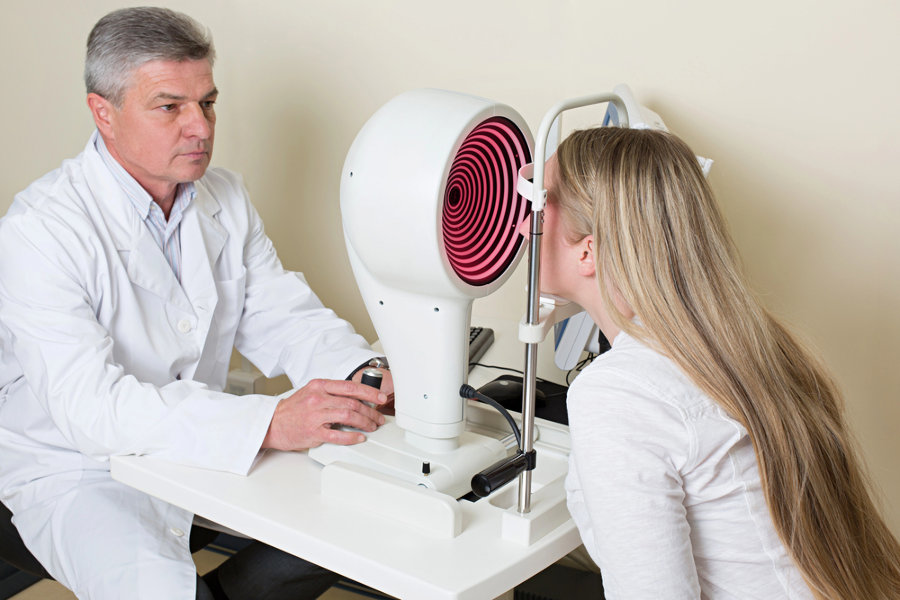Is Epiphoria the Cause of Your Watery Eyes?
Did you know that excessive tears can actually result from your eyes being too dry? Could your watery eyes be trying to tell you something about your overall eye health?
Many people think watery eyes aren’t serious, but left untreated, they can lead to more severe eye problems.
The cause of your discomfort might be an eye condition called epiphoria. It’s a condition characterized by an overproduction of tears or impaired tear drainage due to issues like dryness, blocked tear ducts, or eyelid abnormalities.
I’m Martin Robinson, the owner and principal optometrist at Martin’s Eyecare in Glenorchy, Tasmania. With years of experience helping patients address everything from common vision irritations to complex eye conditions, I’m here to provide clarity on what causes excessive tearing and how to manage it effectively.
Your eye health matters—let’s work together to find the right solution. Keep reading to learn more.
KEY TAKEAWAYS
-
Healthy tear production and drainage is essential for eye health, vision protection and daily comfort.
-
Epiphoria is a condition characterised by excessive tear overflow due to issues with tear drainage or production, leading to irritation, eye redness, and disrupted daily activities.

What is Epiphoria? Who Can Help?
Epiphoria is a condition where tears overflow excessively, often running down the face, and it goes beyond the occasional watering that most people experience. The condition can stem from overproduction of tears, blockages in the tear ducts, or structural abnormalities in the eyelids. Those affected often notice constant tear overflow, redness, and irritation, which can disrupt everyday activities like reading, driving, or even social interactions.
Tears play a vital role in maintaining the health and functionality of the eyes. They create a protective barrier, lubricating the eye’s surface and washing away debris or potential irritants. Tears also contain enzymes and antibodies that help fight infections. For the tear system to work effectively, there must be a delicate balance between production, distribution, and drainage. When this balance is disrupted—whether due to poor tear quality, blocked ducts, or other causes—it can lead to conditions like epiphoria.
Addressing the condition requires the expertise of healthcare professionals.
-
Optometrists: First point of contact for symptom assessment, initial treatment, and lifestyle recommendations.
-
Ophthalmologists: Specialists in advanced diagnostics and surgical procedures, including tear duct surgery.
-
General Practitioners and Allergists: Identify systemic conditions or allergens contributing to excessive tearing.
With the right care team, most cases of epiphoria can be managed effectively, offering relief and restoring comfort. The first step toward better eye health is recognising the problem and seeking professional advice.

Why do eyes water excessively, even when there’s no apparent reason? There are many potential causes.
Direct Causes of Epiphoria
These conditions directly interfere with the tear drainage system or tear flow, leading to persistent tear overflow:
- Blocked Tear Ducts: Obstructions in the tear drainage pathways prevent proper tear flow, causing tears to overflow. Common causes include age-related narrowing, infections, or trauma.
- Eyelid Abnormalities: Conditions like ectropion (outward turning lids) or entropion (inward turning lids) disrupt the natural drainage of tears, resulting in excessive tearing.
- Facial Nerve Conditions: Disorders such as Bell’s palsy impair eyelid function, preventing complete closure and disrupting tear drainage.
Conditions That Mimic or Exacerbate Epiphoria
These conditions do not directly cause epiphoria but may result in similar symptoms (excessive tearing) or worsen underlying issues:
- Dry Eye Syndrome: Poor tear quality causes reflexive tearing, mimicking epiphoria symptoms as the eyes overcompensate for dryness.
- Infections and Inflammations: Conjunctivitis and blepharitis increase tear production due to surface irritation and inflammation, which can overwhelm the drainage system.
- Allergies and Irritants: Exposure to triggers like pollen, dust, or smoke causes temporary tearing. While not a direct cause of epiphoria, chronic irritation can worsen symptoms in those with drainage issues.
- Autoimmune Disorders: Conditions like Sjogren’s syndrome reduce tear quality or volume, potentially triggering reflexive tearing or secondary drainage problems.
This distinction highlights the importance of accurate diagnosis to identify whether excessive tearing is due to true epiphoria or related conditions that mimic or exacerbate its symptoms.
Watery eyes can especially be a problem as we age. To learn more about the causes and treatments for watery eyes in seniors, watch the following video by Dr. Jennifer Wan of Ardent Vision Eyecare.
How Do We Diagnose Watery Eyes?
When diagnosing persistent watery eyes, we use a combination of detailed examinations and advanced testing to uncover the root cause. We start with a physical examination, carefully assessing the eyes for structural abnormalities such as ectropion, entropion, or eyelid inflammation. We also check for signs of blocked tear ducts, including mucus buildup or tenderness around the tear drainage areas, to pinpoint potential blockages.
At Martin’s Eyecare, we also rely on advanced tools like the OCULUS Keratograph® 5M to provide precise insights into the eye’s condition. This state-of-the-art device allows us to analyse tear film quality and flow patterns with exceptional accuracy. It also captures detailed images of the tear ducts, oil glands, and the overall health of the eye’s surface. This technology is particularly effective for diagnosing issues like poor tear quality, meibomian gland dysfunction, or blockages contributing to tear overflow.
By evaluating the composition and flow of tears, we can identify whether the issue stems from overproduction, drainage problems, or inflammation.

Treatment Options for Teary Eyes
What are the most effective ways to manage teary, watery eyes? Treatment depends on the underlying cause, with options ranging from non-invasive solutions to surgical procedures for more complex cases.
Non-Surgical Treatments:
-
Artificial Tears: Over-the-counter or prescription-grade artificial tears help improve tear quality, relieving irritation caused by dryness or reflexive tearing.
-
Allergy Medications: Antihistamines or decongestant drops can reduce tearing caused by allergic reactions to triggers like pollen, dust, or animal dander.
-
Heat Pack and Warm Compresses: Applying gentle heat can soothe irritated eyes, loosen blockages in oil glands, and promote healthier tear film.
-
Antibiotics: In some cases of infection, antibiotic drops or oral medications can eliminate bacteria, reducing inflammation and excessive tearing.
-
Lacrimal Lavage: Also known as lacrimal irrigation or lacrimal syringing, this is a simple in-office procedure where the tear ducts are flushed to remove minor blockages and restore proper drainage.
Surgical Interventions:
-
Dacryocystorhinostomy (DCR): A surgical procedure to bypass blocked tear ducts, creating a new drainage pathway to prevent tear overflow.
-
Eyelid Surgeries: Structural issues like ectropion (outward turning eyelid) or entropion (inward turning eyelid) can be corrected surgically to restore proper tear drainage.
Recommended Products:
-
Zocular Products: Designed specifically for eyelid hygiene, these products help manage epiphora. The okura based Eyelid Foam Cleanser and ZocuWipe™ Towelettes reduce inflammation and improve tear quality when used daily.
Combining these approaches often delivers the best results. Whether it’s a simple solution or a more advanced treatment, addressing the root cause is key to lasting relief.
Prevention and Management
How can you reduce the likelihood of watery eyes becoming a persistent issue? Prevention and ongoing care are crucial for maintaining comfortable and healthy eyes. Simple lifestyle adjustments and consistent eye care routines can make a significant difference.
One of the most effective ways to support eye health is by staying hydrated and maintaining a diet rich in omega-3 fatty acids, which help improve tear quality.
Minimising exposure to irritants like pollen, dust, and smoke can also reduce tear overproduction triggered by allergies or environmental factors. Protective eyewear can shield your eyes in windy or harsh conditions, while regular cleaning of eyelids using gentle cleansers ensures the tear ducts remain unobstructed.
Another practical habit is learning the proper technique for wiping your eyes. Gently dab away tears with a clean tissue, moving outward from the corners of your eyes rather than inward, to avoid spreading bacteria or exacerbating irritation.
Regular eye exams are equally important. They allow early detection of potential issues, giving you the chance to address them before they lead to chronic tearing or discomfort. This proactive approach helps protect not just your eye health but also your overall quality of life.
When to Seek Professional Help for Watery Eyes
When is it time to stop managing watery eyes on your own? While occasional tearing might not seem like a big concern, persistent or severe symptoms often signal a deeper issue requiring professional attention. Changes in vision, ongoing redness, or discharge from the eyes are clear signs that you should consult an optometrist.
Certain symptoms, like discomfort or tearing that doesn’t resolve with over-the-counter remedies, could indicate conditions such as blocked tear ducts or eyelid abnormalities. Additionally, issues like excessive sensitivity to light or pain around the eyes shouldn’t be ignored. These can be linked to more serious concerns that need proper evaluation.
Professional diagnosis provides clarity, pinpointing the root cause of your watery eyes. Advanced tools like the OCULUS Keratograph® 5M allow us at Martin’s Eyecare to assess tear quality, flow patterns, and potential obstructions, guiding effective treatment plans.
CONCLUSION
Excessive tearing, or epiphoria, is more than just a minor annoyance—it often signals deeper issues like blocked tear ducts, eyelid problems, or an imbalance in tear production and drainage. Left unaddressed, it can lead to ongoing discomfort, redness, and disruptions to daily life. The good news? With the right diagnosis and care, watery eyes are manageable, and relief is closer than you think.
Non-surgical solutions, like artificial tears, allergy treatments, and heat packs, can improve tear quality and reduce irritation. For more complex cases, advanced treatments such as lacrimal lavage or surgical options like dacryocystorhinostomy (DCR) can effectively restore proper tear drainage. No matter the cause, pinpointing the root of the problem is key to choosing the best approach.
Healthy, comfortable eyes start with understanding your symptoms. Whether you’re dealing with reflexive tearing from dryness or structural issues that disrupt drainage, we’re here to help. At Martin’s Eyecare, we combine advanced diagnostic tools like the OCULUS Keratograph® 5M with personalized care to ensure you get the best solutions for your needs.
Don’t let watery eyes hold you back. Let’s get your eyes feeling clear, comfortable, and refreshed!
Come and see us at our Glenorchy optometry practice, just a 10 minute drive from the centre of Hobart.
Book your eye care appointment with us today at Martin’s Eyecare.
Call (03) 6272 8423 or use the “Book Appointment” button below.
– Martin Robinson, Optometrist & Owner.
